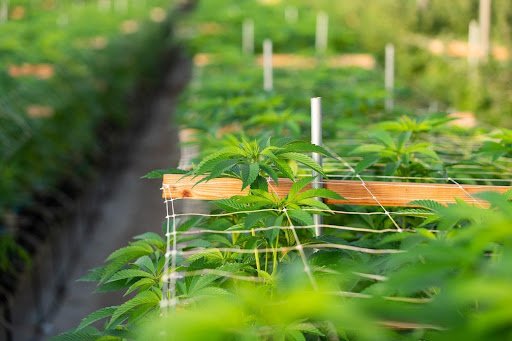A Look Into the Future of Sustainable Emissions Control for Indoor Cannabis Cultivation
The global pandemic has obviously changed the way we think about our health and the importance of indoor air quality (IAQ). This is especially relevant in the workplace. Many businesses have had to reassess their workplace protocols to prevent the spread of germs and other airborne pathogens as much as possible. This holds true for indoor commercial cannabis operations who now must worry about IAQ for not only their plants but their workers as well. Energy consumption is already generally significant for indoor grows; adding multiple separate systems to further address odor as well as direct threats to plant health can impose even greater energy demand.
It is well known that indoor cultivation is an energy-dependent approach to growing cannabis compared to greenhouses or pure outdoor farms. Due to energy and other constraints, it is understandable why many cannabis cultivators are forced to react to botrytis and powdery mildew, an often elusive and unpredictable enemy, rather than take proactive steps to prevent their spread. Additionally, odor control has traditionally been an Achilles Heel for indoor cultivators especially in dense urban locations as they have relied on ineffective and inefficient methods and equipment.
An efficient solution would be a single system that provides multiple functions with very low energy demand. A consolidated system that captures and destroys odor molecules, particulate matter, microbials and other airborne pathogens thereby mitigating negative impacts to workers, plants and environmental health is certainly a sustainable solution for indoor (and greenhouse) cannabis grows.
Can all these problem emissions be controlled with one efficient system?
An example of such technology is the MT-6™ Molecular Filtration System from Byers Scientific. As a comprehensive and sustainable solution for mitigating commercial cannabis odors, the system also provides significantly improved indoor-air-quality by way of its optional electrostatic precipitation and filtration stage. The product of a joint development between Byers Scientific and Holland’s VFA Solutions, the system is designed from both a molecular-level understanding of cannabis facility emissions and years of experience with airborne pathogen destruction.
What Makes a Cannabis Emissions System both Effective and Sustainable?
In the first stage, MERV 9 particulate pre-filters capture both water molecules and larger-sized particulate matter with an optional multi-pocket high efficiency bag filter for high-dust applications, such as in trim and processing rooms.
In the second (and optional) stage, ASPRA® Electrostatic Precipitation and Filtration technology removes and destroys fine dust, bacteria, viruses, spores, allergens and other bioaerosols. This Dutch technology is proven to remove botrytis and powdery mildew as well as viruses such as COVID-19 from the air thereby preserving plant health and potentially increasing yield, while improving indoor-air-quality for workers.
The third and final stage leverages the power of adsorption and the effectiveness of activated coconut shell carbon to effectively scrub canopy emissions from inside the cultivation facility. The system can exchange air at up to 6,000 CFM while only requiring ~2.8 amps of power and can be equipped with remote control, monitoring, and inspection via a proprietary Bolt-On™ Cloud-based SCADA (IoT).
Cleaning and purifying the air of an indoor cultivation facility is not an option when it comes to plant health and odor and especially after the global pandemic has demonstrated the importance of worker health across all industries.
The sensible way to sustainably purify air of all problematic emissions associated with a commercial cannabis operation is by installing a comprehensive system that can do this heavy lifting using minimal energy while preserving carbon media, decreasing waste and overall reducing your carbon footprint. Fortunately, companies like Byers Scientific are leading the way with innovative and sustainable solutions to tackle the greatest problems facing commercial cannabis operators.




